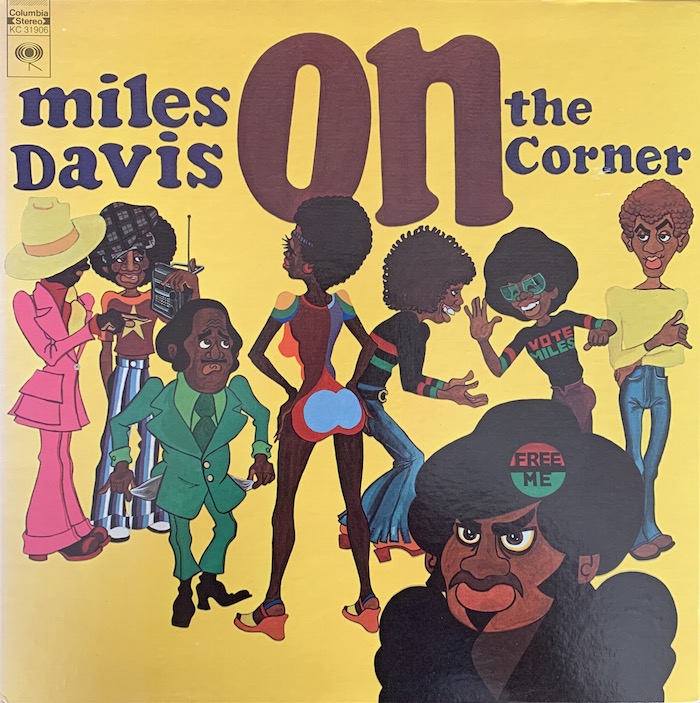
Following on from Herbie Hancock’s jazz-robotics on ‘Rain Dance‘, we turn to another album that was Miles ahead of its time, and features three of the musicians who would go on to appear on Sextant: Herbie Hancock (keys), Bennie Maupin (bass clarinet) and Billy Hart (drums).
If Bitches Brew (1970) was Miles Davis’ reaction to rock music, On The Corner (1972) was his answer to funk. Miles always had an ear to the ground, and what he heard was African-American audiences turning away from jazz to listen to James Brown and Sly and the Family Stone.
He built On The Corner to reconnect with this community, telling Melody Maker: “I don’t care who buys the record so long as they get to the black people so I will be remembered when I die. I’m not playing for any white people, man.”
He assembled no fewer than 20 musicians (including pianist Chick Corea, guitarist John McLaughlin and drummer Jack DeJohnette) for hours of jamming sessions, which producer Teo Macero spliced into groove-laden musical collages, inspired by the “musique concrète” approach of Karlheinz Stockhausen.
Miles embraced the circularity of Stockhausen’s work, saying: “I never end songs: they just keep going on.” The album even starts halfway through a piece of music, as though you’ve stumbled onto the street and into a crowd of people dancing or fighting or both.
This collision of the urban and avant-garde can be heard on the track ‘Black Satin’, with its concrete layers of tablas, sitars, bass, electronics and Miles’ wah-wah trumpet all phasing in and out of earshot. Panning effects give the feeling of standing “on the corner” of a street in New York, cars rushing past in different directions with their radios on, leaving impressions of music both recognisable and abstract.
Influenced by the hazy paranoia of Sly and the Family Stone’s There’s a Riot Goin’ On (1971), where Sly Stone recorded his vocals while lying in bed, Miles’ horn sounds so buried in sound that were it not for Davis’ name on the cover (which features Corky McCoy’s bright, funky “ghetto caricatures”) you probably wouldn’t even recognise it as a trumpet.
Widely panned upon its release, the album has become a cornerstone of hip-hop, drum and bass and everything in between. Ambitious, audacious and angry, On The Corner is the sound of American music in a European cement mixer.
If you enjoyed this post and want to stay updated, make sure to subscribe to our Spotify playlist and follow us on Instagram and Twitter!
